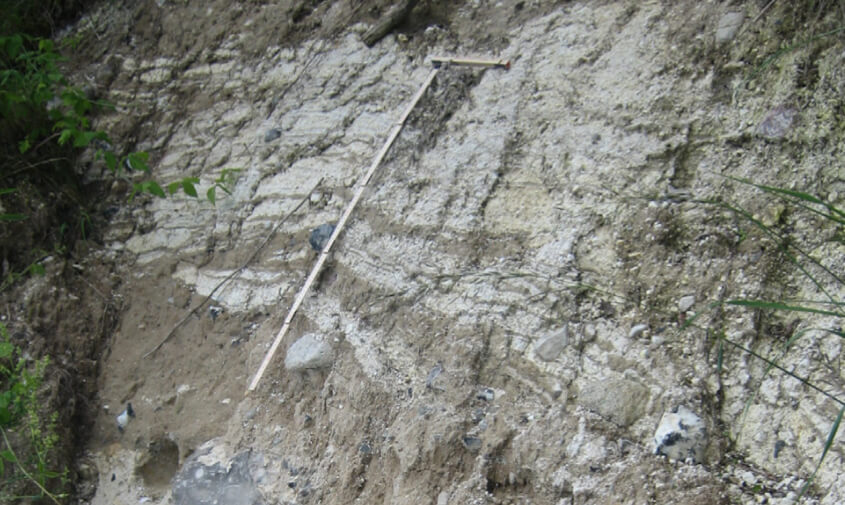
How to Cite
Share
Abstract
A glacitectonite is defined as a brecciated sediment or a cataclastic sedimentary rock formed by glaciotectonic deformation (Pedersen 1988). The term tectonite was initially introduced by Sander (1912), mainly for tectonically brecciated metamorphic rocks in the Alps. In the classic work on cataclastic rocks, Higgins (1971) stated that the term covered all rocks with fabric displaying coordinated geometric features related to continuous flow during deformation.Therefore brecciated lithologies formed by glaciotectonic deformations can be termed tectonites. Banham (1977) suggested the prefix glaci- to clarify the relation to glacial dynamics. Furthermore, Pedersen (1988) suggested the application of the bedrock prefix. Thus, a chalk-glacitectonite is a brecciated chalk formed by shear deformation during a glacial advance over an exposed bedrock surface of chalk (Fig. 1). Hence the term describes a sedimentary rock in which the primary structures are so disturbed that they cannot be continuously traced, and a glacitectonic fabric developed as joint fractures or shear surfaces superimposed on the lithology. The significance of recognising chalk-glacitectonite from chalk and limestone bedrock is the difference in textural properties, which is fundamental in geological modelling. In areas dominated by glaciotectonic complexes, which include thrust sheets of pre-glacial sedimentary rocks, the sheets are subject to shearing and dragged along the sole of the ice during its movement over the glaciotectonic complex. Due to truncation and shear-drag, the glacitectonite forms at the base of the deformational layer in a lodgement till. From the source area, which typically is a detachment anticline, the glacitectonite thins out in the direction of transport from 1–2 m (Fig. 2) to a thin shear zone only a few centimetres thick over a distance of one to a few kilometres (Pedersen 1996). Moreover, brecciation of thrust sheets displaced by glacial thrusting occurs within glaciotectonic complexes. The deformation ranges from initially anastomosing jointing (Figs 1, 3) to brecciation with bedrock clasts in crushed bedrock matrix (Fig. 4). The tectonic breccia distributed from the décollement zone at the base to the truncating glacial unconformity at the top may additionally be termed glacitectonites. Here we describe the occurrence and identification of chalk-tectonites.
How to Cite
Share
Downloads
Editors Adam A. Garde, Ole Bennike and W. Stuart Watt
The 22 contributions in this issue of Review of Survey activities demonstrate the broad field of activities performed by the Geological Survey of Denmark and Greenland and external partners.
Seven papers on Danish geology comprise an investigation of reservoir sandstones for oil [...]










